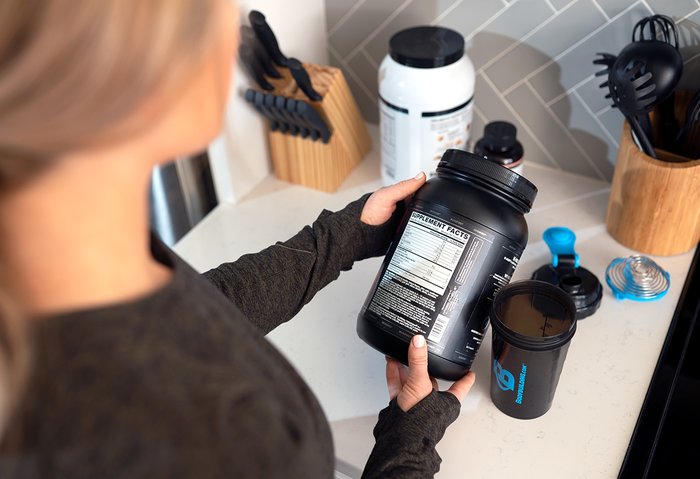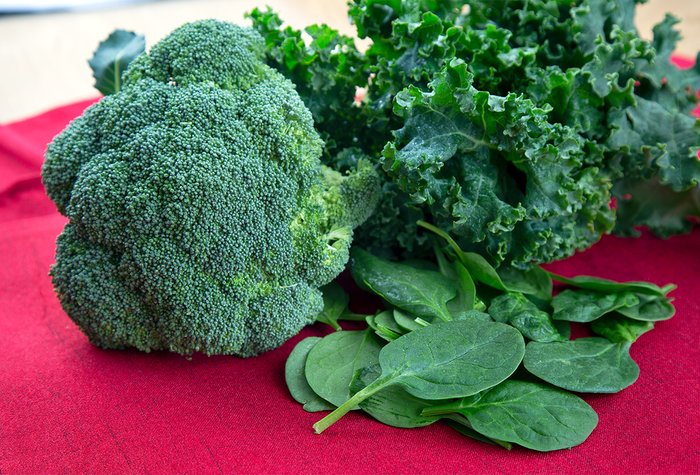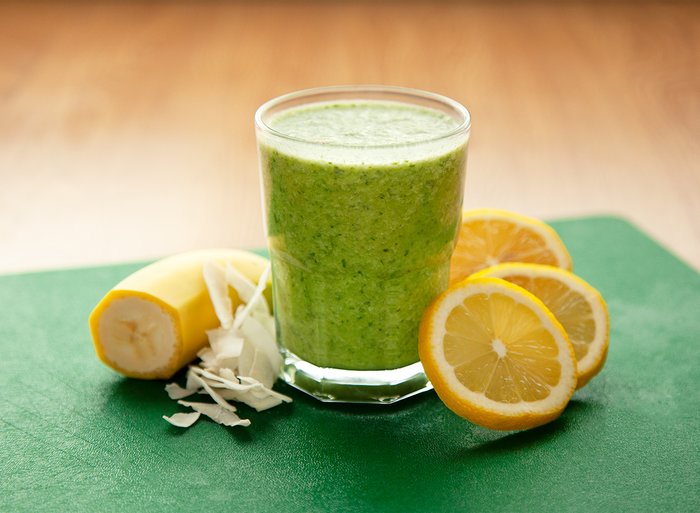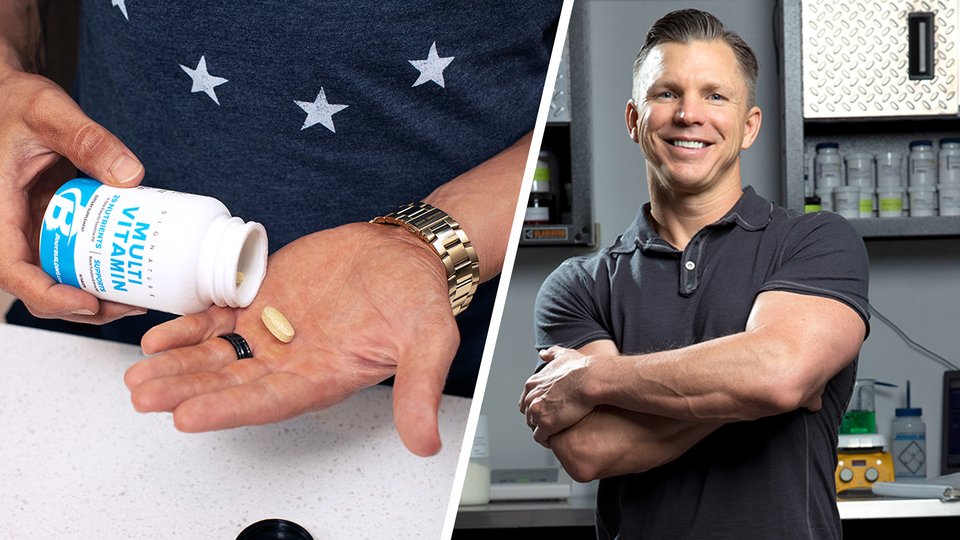Products You May Like
The past several years has seen a significant rise in the number of green (or sometimes red) powders on the market calling themselves something along the lines of “superfoods.” They go by countless brand names, but generally, you know one when you see one. And their names often imply—and sometimes their marketing claims directly—that such products provide complete nutrition and contain all the essential vitamins and minerals you need in 1-2 scoops per day.
Claims like “nothing is more complete” and “delivers optimal levels of vitamins and minerals” leave little room for consumers to think otherwise, right?

It’s not surprising, then, that some consumers of these products assume they can simply take them and ditch their multivitamin or mineral supplement—and maybe some or all of the other supplements they would otherwise take for daily support and wellness.
If you’ve been wondering the same thing, or have already canceled the auto-ship on your multis, here’s how to know if your superfood blend is up to snuff, and to make it work overtime for you!
How to Know If Your Superfood Is Truly Super
You can typically use a superfoods formula to replace your multi, so long as two conditions are met. First, the superfoods formula needs to provide a validated Supplement Facts panel that lists all the essential vitamins and minerals you were previously getting from a multi, and that it provides them in comparable doses.
If a superfoods formula doesn’t disclose the minimal per serving amounts of the essential vitamins and minerals, or it keeps them hidden behind an impressively named “matrix” or other proprietary blend, then one of two things may be true:
- The company knows the values are too low and will contradict their impressive marketing.
- The company has failed to invest in any such analytical testing of the product it’s marketing.
In either case, I recommend you look for a more transparent superfoods formula to buy.
The second condition is that you take a well-formulated digestive enzyme about 15 minutes before you begin drinking your superfoods shake. In most cases, I would also recommend that the shake include (or you add) certain key ingredients to increase the typically very poor absorption of essential nutrients from plant foods. This second condition requires a bit more unpacking, though.
The Problem with Plants: Absorption
As I explained in my article “Start Here: The Right Supplements for Every Body,” consuming a wide variety of fresh or lightly cooked organic fruits and vegetables can do wonders for supporting a healthy and diverse population of beneficial bacteria, and that’s where your strategy should start. But that’s definitely not where the conversation about optimizing nutrient absorption ends, and we can learn a lot by looking at plant-based diets for inspiration.
Vegetarian and vegan diets are growing in popularity as a health-focused (as opposed to ethical) approach, in large part because diets high in a variety of plant-based foods provide a host of beneficial health effects. However, the data is very clear about the absence of certain key nutrients from vegan diets, as well as the poor bioavailability of vitamins, minerals, protein, amino acids, and other valuable nutrients from plants. It’s one reason why nutrient deficiencies are so prevalent within developing countries where vegetarian diets predominate.[1]

The solution is to eat as many different healthy plants as possible, right? That’s definitely part of the logic informing the whole idea of “superfood” blends. And yes, plant-based diets that are high in variety provide a host of beneficial effects, since they’re rich in a variety of bioactive compounds that we’re still many years away from fully identifying. However, some of the same beneficial compounds present in plants are also responsible for significantly and negatively affecting how much of the plant’s vital nutrients are absorbed and made available to target tissues for use within the body.
For example, let’s look at trypsin. It’s a digestive enzyme released by your pancreas, and your body uses it to make the protein you consume available to be absorbed. However, certain ingredients naturally present and in high concentrations in plant foods like soybeans, hemp, legumes, and grains inhibit (or block) trypsin, and have been shown to reduce the digestibility of proteins and amino acids by up to 50 percent.[2] That’s just one example, though. Plant tannins, glucosinolates, oxalates, and lectins are a few other examples of bioactive elements that can act as both friend and foe in human health.
You may have also heard that the iron within plant-based foods isn’t particularly well-absorbed—like only 5-12 percent of the total amount present. That’s 14-72 percent lower absorption than you get from the iron naturally present within animal products.[3] The reason for the lower absorption from plant sources is because the iron is tightly bound to the naturally occurring compound phytate, and those phosphate bonds are not easily broken within digestion.
Almost all naturally-occurring plant sources of vitamins and minerals pose this problem. Some are because of phytate, others are because of different binding proteins that similarly “lock up” their precious cargo from easy release. Or, in other cases, they simply don’t provide the vitamin in its most biologically active form when it does make the nutrient available.
The good news is that a well-formulated digestive enzyme can help increase the bioavailability of the phytonutrients present within plant-based foods, and in your superfood shake. Choose a multi-enzyme formula specifically formulated to help you digest plant-based foods, which should most definitely include effective doses of phytase, cellulase, hemicellulase, pectinase, and phytase.
Pucker Up
Acidification of your shake is another way to increase the bioavailability of many ingredients in your shake. The best part: No further supplement purchases required! Simply add half of a lemon or lime, an equivalent amount of lemon or lime juice, or (if you’ve got it lying around) a couple of grams of citric or malic acid powder to your drink.

Want to boost absorption even more? Add a teaspoon of finely ground, antioxidant-promoting spices such as black pepper, turmeric, onion, or ginger, all of which have been shown to increase nutrient bioavailability.[4] Is there a Bloody Mary flavored superfoods drink, yet?
Yes, this may make your superfood drink a wild flavor experience. But honestly, if that drink is full of ingredients that are included because they taste good, it’s probably not as “super” as it could be. Stay focused on the good stuff, get a lot of it, and do what you can to help your body absorb it!
References
- Gibson, R. S., Perlas, L., & Hotz, C. (2006). Improving the bioavailability of nutrients in plant foods at the household level. Proceedings of the Nutrition Society, 65(2), 160-168.
- Gilani, G. S., Xiao, C. W., & Cockell, K. A. (2012). Impact of antinutritional factors in food proteins on the digestibility of protein and the bioavailability of amino acids and on protein quality. British Journal of Nutrition, 108(S2), S315-S332.
- Agnoli, C., Baroni, L., Bertini, I., Ciappellano, S., Fabbri, A., Papa, M., … & Sieri, S. (2017). Position paper on vegetarian diets from the working group of the Italian Society of Human Nutrition. Nutrition, Metabolism and Cardiovascular Diseases, 27(12), 1037-1052.
- Platel, K., & Srinivasan, K. (2016). Bioavailability of micronutrients from plant foods: an update. Critical Reviews in Food Science and Nutrition, 56(10), 1608-1619.
